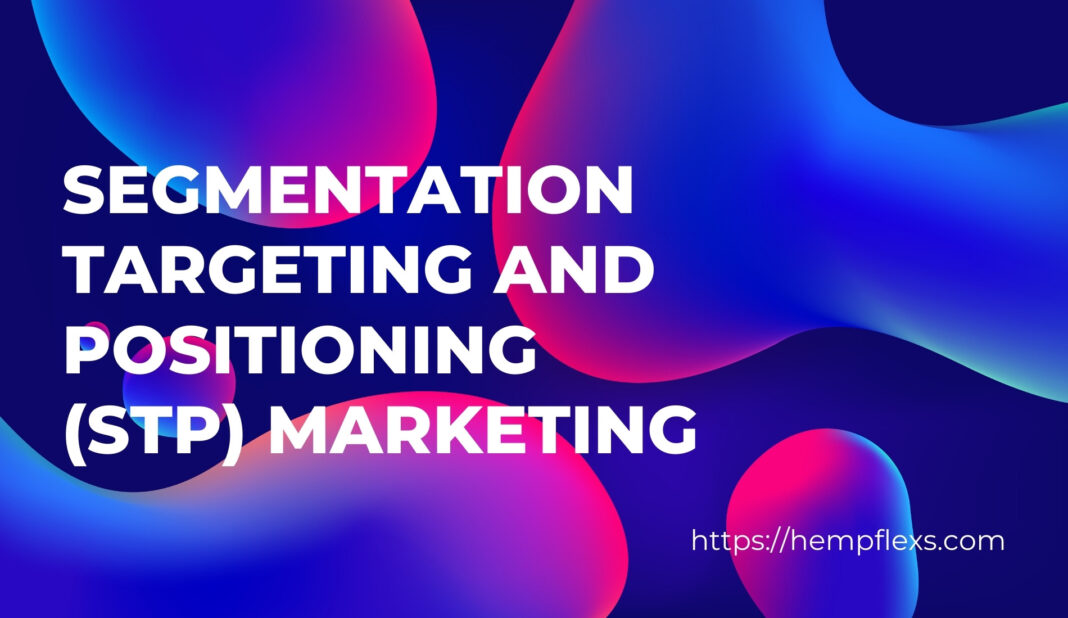What is STP marketing, and what is its role in boosting and increasing revenue? In this article, we will look at examples from the real life of Segmentation, Targeting and Positioning.
An STP, which stands for segmentation Targeting and Positioning, is a core marketing strategy without which you can not scale your eCommerce business to a higher level.
Contents
Segmentation Targeting And Positioning (STP) Model
Let’s dive deep into the concept of Segmentation, targeting and positioning model and see how the STP model can yield your sales and boost your business. What exactly the STP model is, and how does it work for you?
What Is STP Marketing
STP Marketing is Segmentation, Targeting and Positioning, a three-step formula or model that examines your product or service and how you describe benefits to the customer and then position yourself.

This model means you select your segment market, target the selected customer or market and position yourself according to their needs and expectations.
STP marketing is effective because it focuses on breaking the customer base and allows you to develop a specific strategy to reach and engage a targeted audience.
Also, almost 60% of customers said that personalization influence shopping decisions and another 41% claim that personalized shopping influences them to repeat the brand regularly. Here we will discuss the Stp formula and discuss Market Segmentation Targeting And Positioning Examples.
Pull Marketing Strategy Examples, Advantages & Disadvantages
The STP Formula
If you are looking to remember this formula easily, then remember as Segmentation and targeting equals positioning. This means that every segmentation needs proper targeting to get insured its success. let’s discuss step by step
01. Segmentation:
Segmentation is the first step of the Segmentation targeting and positioning (STP) model. The main goal is to create the segmentation of customers based on criteria or traits you consider. The four customer segmentation is as
- Demographic Segmentation: Divide the audience based on age, occupation, education and gender.
- Geographic Segmentation: Divide your audience on the basis of country, state, province or city.
- Behavioral Segmentation: Divide your audience based on their intent. How do they purchase? from where and what do they purchase?
- Psychographic Segmentation: Dividing your audience based on who your target customer is. Their lifestyle, opinions, interest or hobbies.
02. Targeting
The second step in the STP model is targeting. In this step, the main goal is that the segments you have created are to look at which one will create sales and generate more leads, which can be email signup. The ideal segment is actively growing and generating leads.
- Size: Consider your segment length and its future growth of it.
- Profitability: Determine the lifetime value of customers in the segment and compare it with others.
- Reachability: Consider how difficult to reach out to your segment with marketing efforts.
What Is Concentrated Marketing Strategy?
03. Positioning
The final step in the STP model is positioning, which allows you to set up your service or product apart from the competition. Many others are doing what you offer, but you must do something different to stand out.
- Symbolic Positioning: Enhance the self-image or ego of the customer.
- Functional Positioning: Always solve your customer problem and give them genuine solutions.
- Experimental Positioning: Also focus on the emotional connection the customer has with your product or you.
Segmentation Targeting And Positioning Examples
The Segmentation targeting and positioning model is just around for a long time it is useful too. We will have a look at Market Segmentation Targeting And Positioning Examples and see how effectively it works to increase revenue and sales.
In the 1980s, when Pepsi tries to have shares of coca cola. Pepsi used segmentation to target certain key audiences. They focus on loyalty and the attitude of customers and divide them into three segments.
- Consumers with a positive attitude to coke and 100% loyal to coca cola.
- Consumers with a positive attitude toward Pepsi and 100% loyal to Coca-cola.
- Consumers with a positive attitude both are also loyal to both and those who switch their purchases and not purchasing any brand consistently.
Pepsi always focuses on the third segmentation as they use all their marketing efforts effectively and generate more revenue and sales.
Focusing on the First segment is a total waste of money and time because consumers loyal to coke do not change their purchasing habits.
But all of that changed after the new launch of coke in 1985. Then, the best and favorite drink loses its space and loyalty to its customers. Then Pepsi started to target those loyal consumers of Coke.
Their marketing campaign is brutal even nowadays too. With that marketing strategy, Pepsi saw a spike of 14% in its sales. It is the Segmentation Targeting And Positioning example.
Benefits Of Segmentation Targeting and Positioning
If you are still not convinced that STP marketing will revolutionize your business, I will add some of the benefits of the Segmentation Targeting And Positioning marketing strategy.
As STP marketing focuses on a small and targeted group audience, your marketing becomes super personalized. With personalization
- Brand Messaging becomes more personal as you have a customer persona and know exactly to whom you are talking.
- Marketing Mix has become clearer and yields higher ROI because you are not wasting your budget on channels that customers mostly ignore.
- Product innovation becomes more effective because you know whom to ask for reviews and ask for feedback in development.
According to research, 58% of eCommerce websites focus on Segmentation Targeting And Positioning marketing strategy, so their customer retention is above 54%.
Conclusion:
Using the Segmentation Targeting And Positioning (STP) Marketing model, businesses can easily identify their consumer segment and create marketing plans that target those customers. This helps you to create, engage and convert visitors into customers at a high scale.
























































